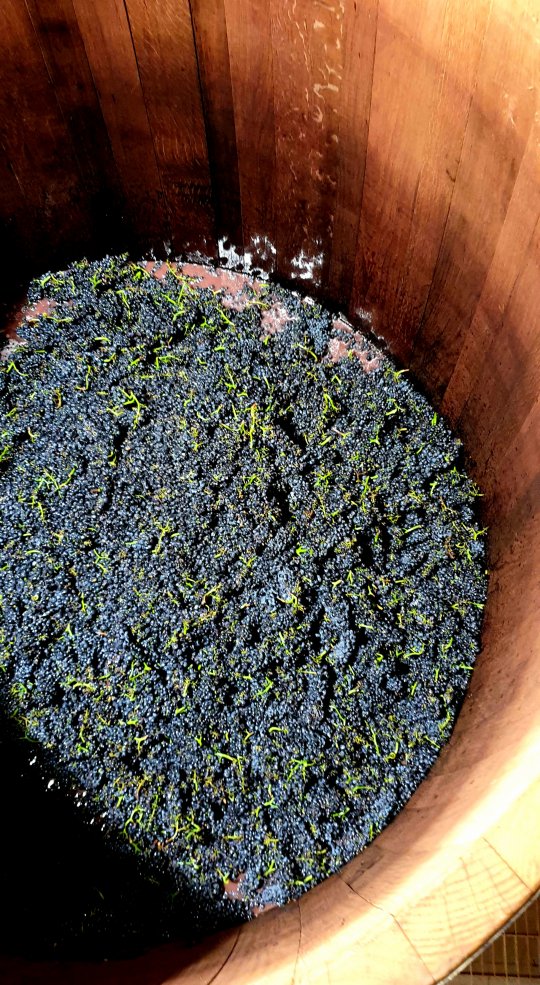Advantages
Destemming can have advantages as well as disadvantages. It all depends on the stem quality, the degree of ripening and the grape variety.
-
Fermentations with stems are quicker. The stems enable better aeration of the fermentation environment and reduce temperature increases. Similarly, the aeration effect allows auto-filtration during pressing.
-
They can also, in certain cases, reduce the alcohol content, since they contain a lot of water and little sugar. The stems modify the wine's profile and protect wines made from botrytized grapes against oxidative damage.
-
The phenolic richness given to the wines can be a quality factor for young vines and/or in the case where the tannic structure seems insufficient. A decrease in colour may be observed due to the higher proportion of water, and the woody surface and tannins contained in the stems that fix and combine with the anthocyanins. However, during the ageing process, the colour is better preserved than in a destemmed harvest. The high proportion of tannins from the stems protects the anthocyanins from oxidation. The tannin concentration originating from the stems can reach up to 21% of the total amount in a bunch.

